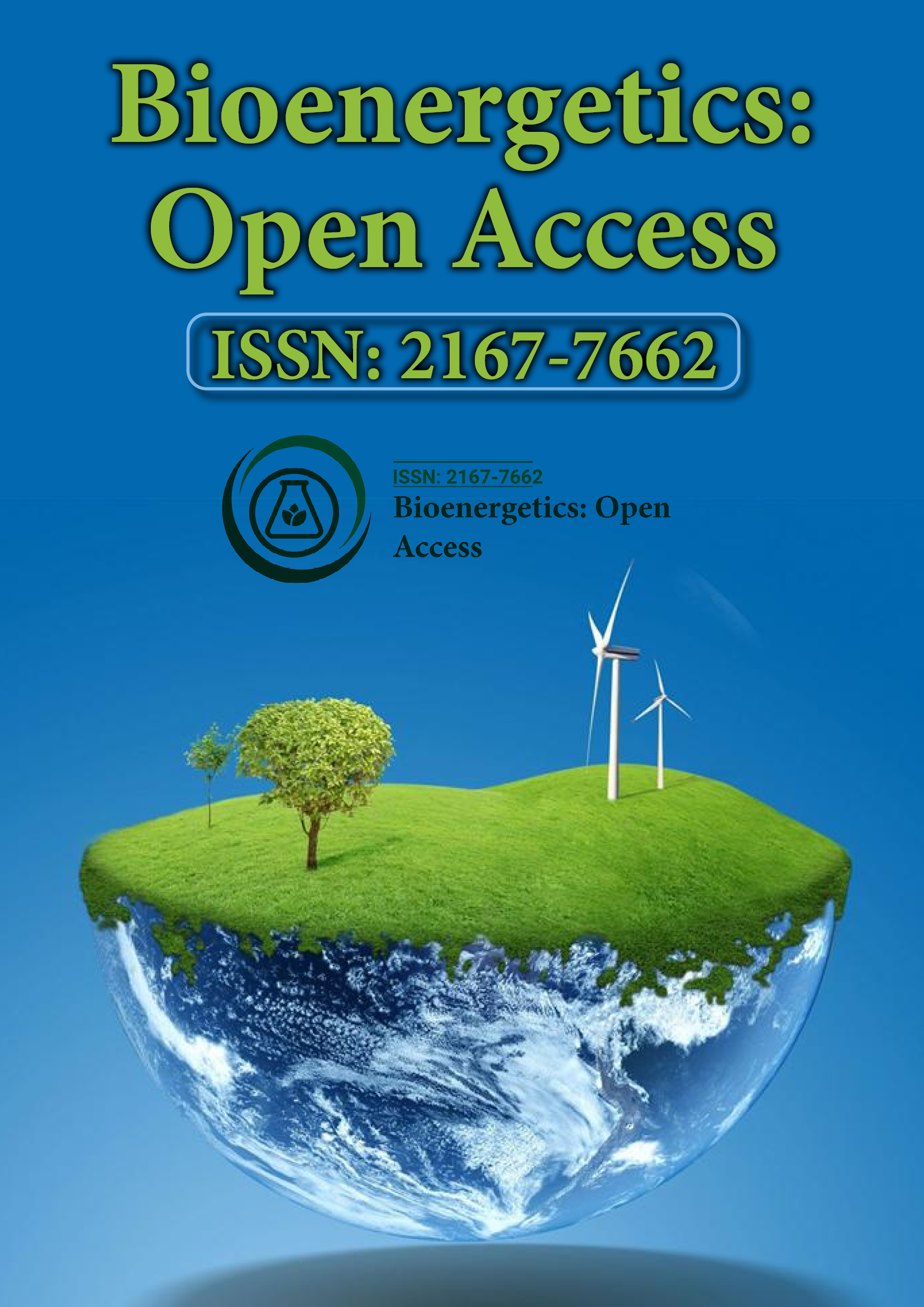Indexed In
- Open J Gate
- Genamics JournalSeek
- Academic Keys
- ResearchBible
- RefSeek
- Directory of Research Journal Indexing (DRJI)
- Hamdard University
- EBSCO A-Z
- OCLC- WorldCat
- Scholarsteer
- Publons
- Euro Pub
- Google Scholar
Useful Links
Share This Page
Journal Flyer

Open Access Journals
- Agri and Aquaculture
- Biochemistry
- Bioinformatics & Systems Biology
- Business & Management
- Chemistry
- Clinical Sciences
- Engineering
- Food & Nutrition
- General Science
- Genetics & Molecular Biology
- Immunology & Microbiology
- Medical Sciences
- Neuroscience & Psychology
- Nursing & Health Care
- Pharmaceutical Sciences
Perspective - (2023) Volume 11, Issue 6
Role of Photosynthesis in the Synthesis of Renewable Energy
Gaofei Zhao*Received: 18-Oct-2023, Manuscript No. BEG-23-23844; Editor assigned: 20-Oct-2023, Pre QC No. BEG-23-23844 (PQ); Reviewed: 06-Nov-2023, QC No. BEG-23-23844; Revised: 13-Nov-2023, Manuscript No. BEG-23-23844 (R); Published: 21-Nov-2023, DOI: 10.35248/2167-7662.23.11.237
Description
Photosynthesis is a fundamental biological process that powers life on Earth. It is the engine behind the green world, where plants, algae, and some bacteria capture sunlight and convert it into chemical energy, primarily in the form of glucose. Understanding the molecular mechanism of photosynthesis is not only essential for appreciating the wonders of the natural world but also has profound implications for sustainable energy production and addressing climate change. In this article, we will explore the intricate molecular balance that takes place during photosynthesis, focussing on the remarkable wink way in which plants turn sunlight into energy.
Photosynthesis in a nutshell
Photosynthesis is a complex process that can be summarized as the conversion of carbon dioxide (CO2) and water (H2O) into glucose (C6H12O6) and oxygen (O2) using sunlight as an energy source. This transformation occurs in the chloroplasts of plant cells, particularly in the green pigment chlorophyll. The process can be broken down into two stages: the light-dependent reactions and the light-independent reactions, also known as the Calvin cycle.
Light-dependent reactions
The light-dependent reactions take place in the thylakoid membranes of chloroplasts and are the first step in photosynthesis. These reactions convert light energy into chemical energy in the form of Adenosine Triphosphate (ATP) and Nicotinamide Adenine Dinucleotide Phosphate (NADPH). The molecular machinery responsible for this process is composed of several key components:
Chlorophyll: Chlorophyll molecules, situated within the thylakoid membranes, are responsible for absorbing light energy. They exist in two forms, chlorophyll-a and chlorophyll-b, each absorbing different wavelengths of light, primarily in the blue and red regions of the electromagnetic spectrum.
Photosystem I (PSI) and Photosystem II (PSII): These are protein complexes embedded in the thylakoid membranes that contain chlorophyll and other pigments. PSII is responsible for water splitting, releasing oxygen, while PSI generates NADPH.
Electron transport chain: Electrons generated by the absorption of light energy flow through a series of protein complexes in the thylakoid membrane, known as the electron transport chain. This flow of electrons creates a proton gradient that drives ATP synthesis.
Light-independent reactions (Calvin cycle)
The products of the light-dependent reactions, ATP and NADPH, are used in the light-independent reactions, also known as the Calvin cycle. This series of enzyme-catalyzed reactions takes place in the stroma of the chloroplast. During the Calvin cycle, carbon dioxide is fixed into organic compounds, ultimately resulting in the formation of glucose. The cycle involves several key steps:
Carbon fixation: Carbon dioxide is combined with a five-carbon sugar molecule, Ribulose-1,5-Bisphosphate (RuBP), with the help of an enzyme called Ribulose-1,5-Bisphosphate Carboxylase/ Oxygenase (RuBisCO). This results in the formation of a three- carbon compound, 3-phosphoglycerate (3-PGA).
Reduction and carbohydrate formation: ATP and NADPH, generated in the light-dependent reactions, are used to convert 3- PGA into Glyceraldehyde-3-Phosphate (G3P), a three-carbon sugar. G3P is a precursor to glucose and other carbohydrates.
Regeneration of RuBP: Some G3P molecules are used to regenerate RuBP, ensuring the cycle can continue. This step requires energy input from ATP.
The molecular mechanism of photosynthesis is a remarkable example of nature's ingenuity. It involves the precise orchestration of multiple proteins, pigments, and enzymes working together to convert sunlight into chemical energy. This process not only sustains plant life but also serves as the foundation for the entire food chain on Earth, providing energy for animals and humans.
Furthermore, understanding the intricacies of photosynthesis has critical implications for sustainable energy production. Efforts to replicate and optimize photosynthetic processes in artificial systems have the potential to revolutionize renewable energy technologies, reduce carbon emissions, and mitigate climate change.
As we continue to delve deeper into the molecular mechanisms of photosynthesis, we uncover more of the secrets behind this green powerhouse. It serves as a testament to the power of scientific inquiry and that can be found be in even the most fundamental processes of life.
Citation: Zhao G (2023) Role of Photosynthesis in the Synthesis of Renewable Energy. J Bio Energetics. 11:237.
Copyright: © 2023 Zhao G. This is an open-access article distributed under the terms of the Creative Commons Attribution License, which permits unrestricted use, distribution, and reproduction in any medium, provided the original author and source are credited.
